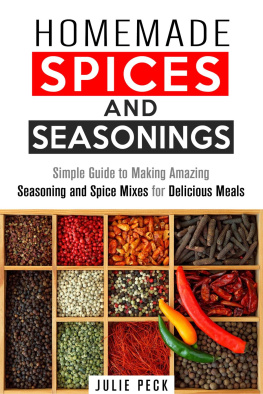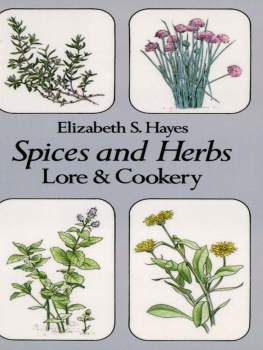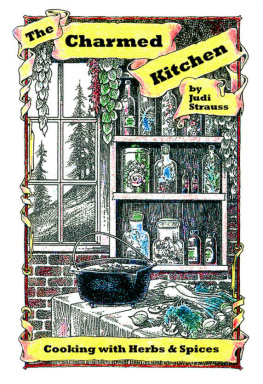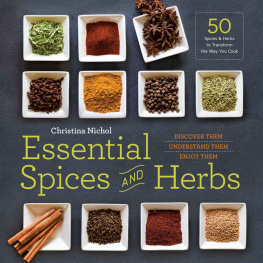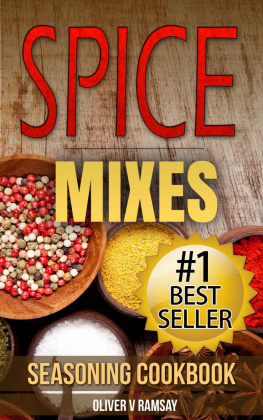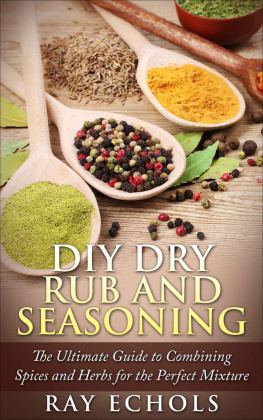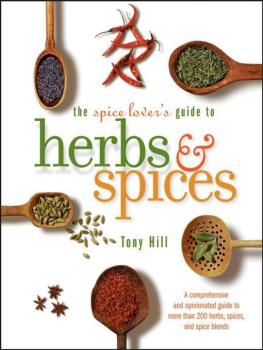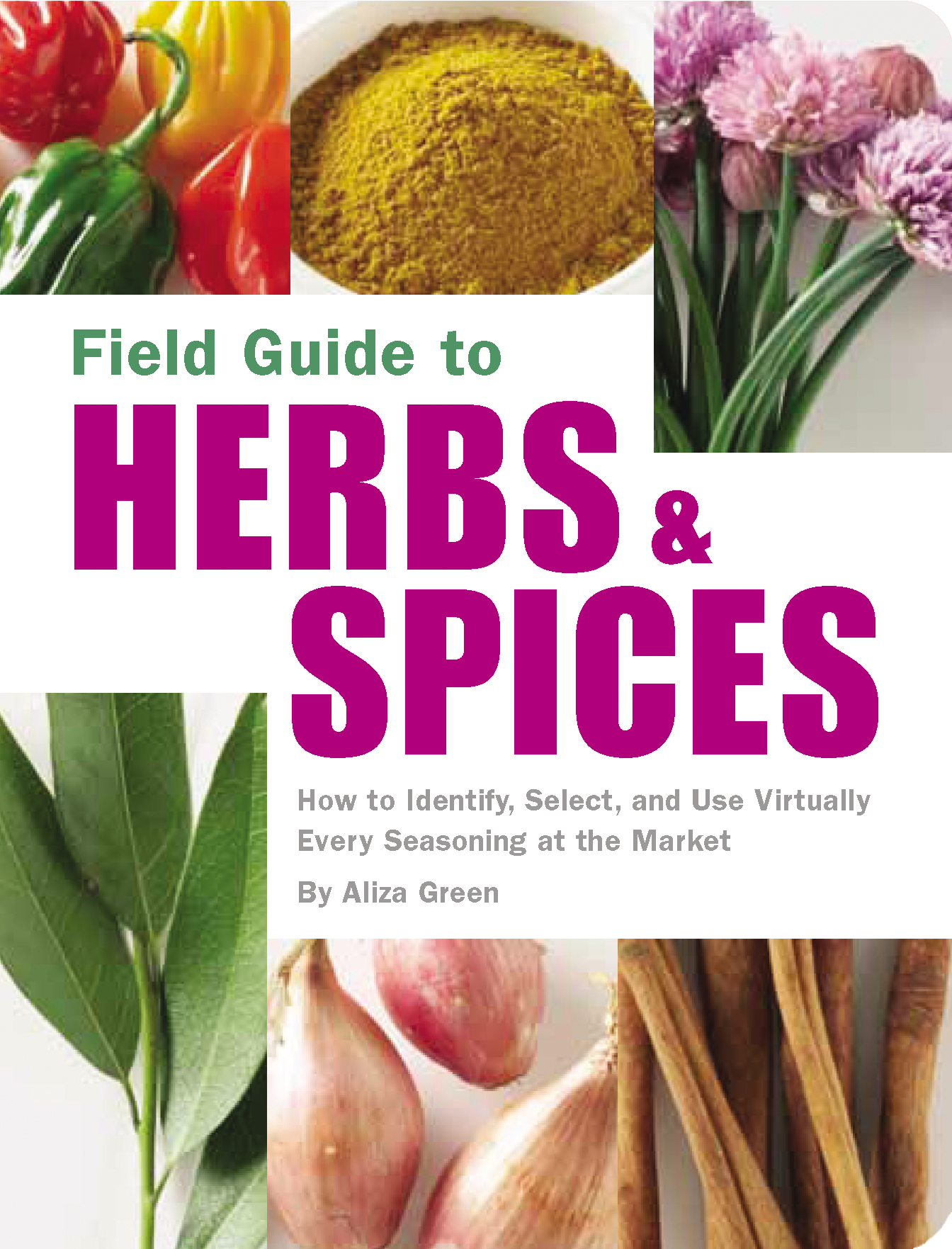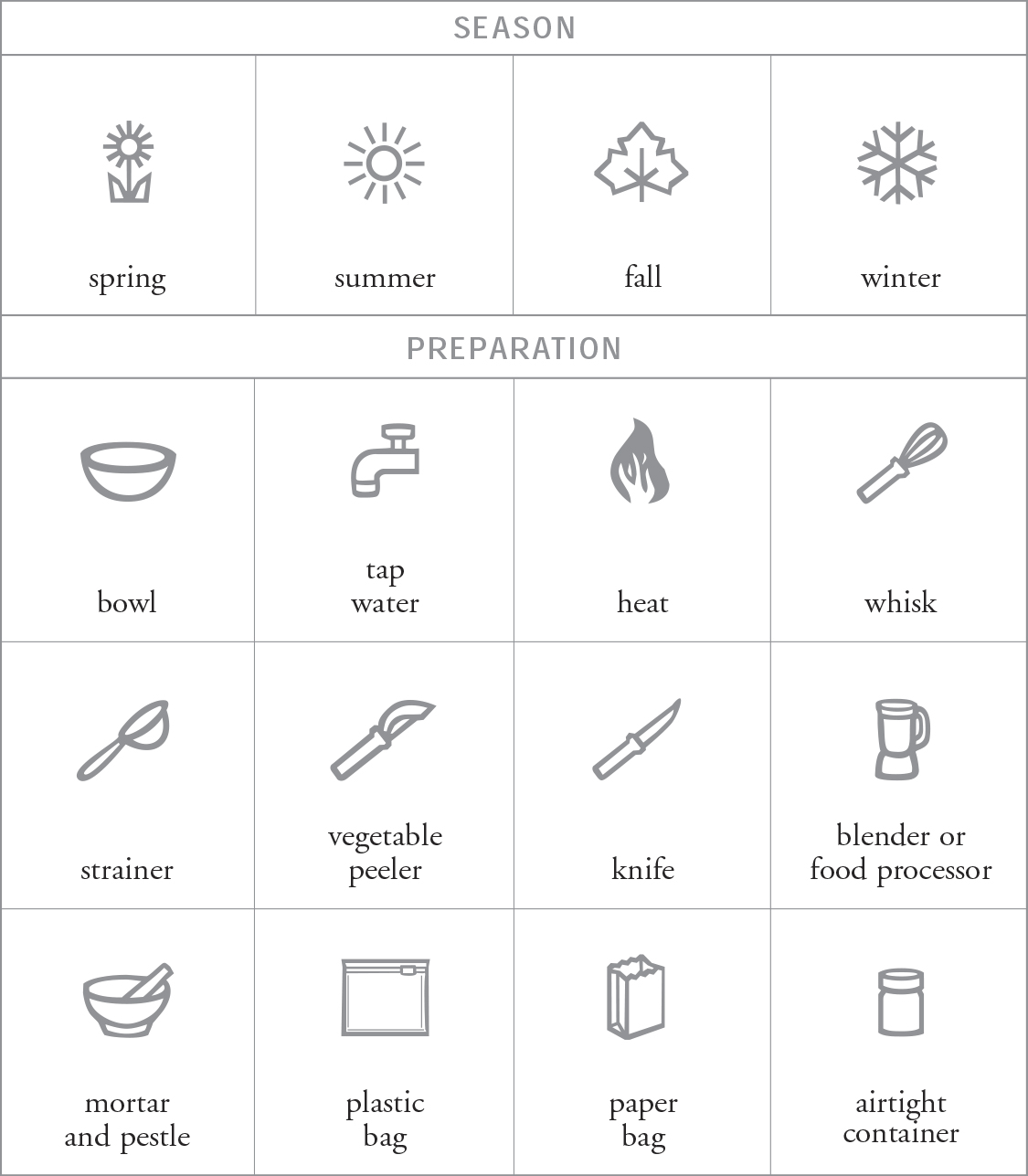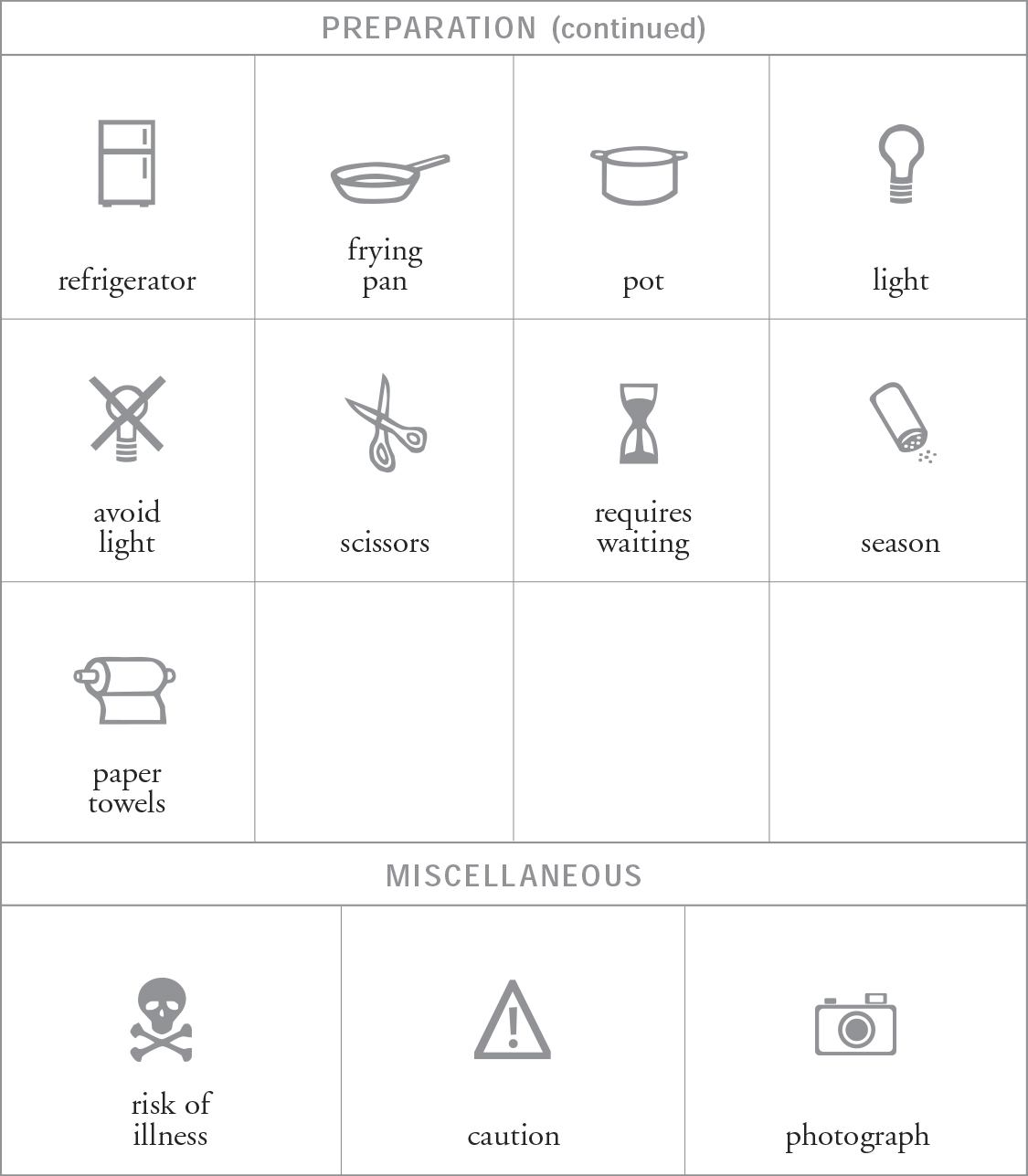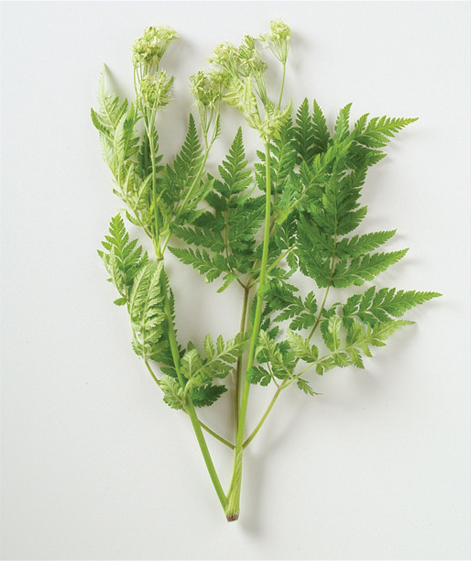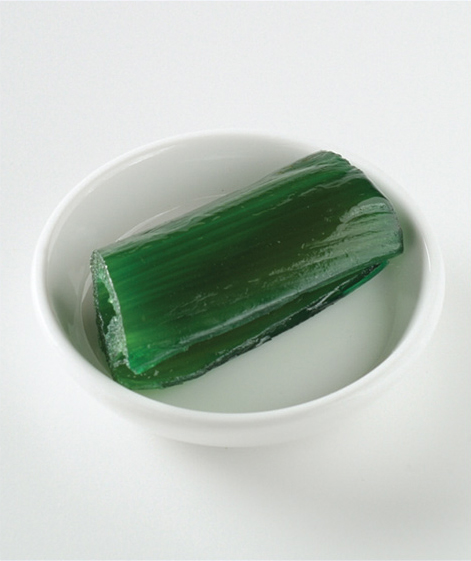DISCLAIMER
The world of seasoning is wide and varied. While we have taken care to represent a large variety of those available, the author and publisher cannot guarantee this guide addresses every possible herb and spice available worldwide.
Copyright 2006 by Quirk Productions, Inc.
All rights reserved. No part of this book may be reproduced in any form without written permission from the publisher.
Library of Congress Cataloging in Publication Number: 2005930879
eBook ISBN: 978-1-59474-845-5
Trade Paperback ISBN: 978-1-59474-082-4
Designed by Karen Onorato
Photography by Steve Legato
Iconography by Karen Onorato
Edited by Erin Slonaker
All photographs copyright 2006 by Quirk Productions, Inc., except photo 7, courtesy istockphoto.com.
Quirk Books
215 Church Street
Philadelphia, PA 19106
quirkbooks.com
v3.1
Contents
Introduction
Heres a compact, easy-to-carry book thats packed with information to help sort your way through the world of herbs, both fresh and dried, and spices, along with herb and spice mixes. Youll learn how to identify, select, store, and cook with herbs such as . International recipes and menus will be easier to understand because herb and spice names in many languages are included at the beginning of each entry.
Read this book to learn the difference between cinnamon and cassia, green and black cardamom, and white and black mustard seeds. Each listing includes a simple, characteristic recipe that highlights the flavor of that seasoning. A section on herb and spice mixes describes them and includes recipes for creating your own shrimp/crab boil, apple pie spice, Moroccan ras el hanout, homemade chili powder, and more. Recipes, preparation suggestions, and food affinities make it easy to explore new spices and herbs.
While it would take a much larger book to cover all the herbs and spices sold in todays global food market, I have crammed as much information, recipes, and photos as possible into this portable guide.
Please write to me with questions and comments at www.alizagreen.com.
Aliza Green
Icon Key
Herbs
Herbs are the leaves of plants used as flavorings. Fresh herbs may be found loose in small plastic bags, fastened in bunches, growing in a pot, or encased in plastic boxes. No matter how theyre packed, choose fresh herbs with vibrant color and aroma, and avoid any that are limp, yellowing, or have black spots. Robust field-grown herbs are generally preferred over more fragile greenhouse-grown herbs. Field-grown herbs will have larger, more fragrant, and hardier leaves, because theyve been grown in plenty of sunlight during the day (to produce lustrous deep green leaves) and cool nighttime temperatures (for crispness and sweetness).
To store all fresh herbs, remove any rubber bands or fasteners, spread out the sprigs, and pick out and discard any that are slimy or yellowed. If roots are present, cut them off to prevent the tops from wilting, saving the washed roots to flavor sauces and soups, if desired. Trim the herbs, swish around vigorously in a large bowl of water, scoop out, and drain. Spread them out on towels or spin dry in a salad spinner. Wrap the herbs loosely in paper towels and place them into a zip-top bag, blowing to fill the bag with air as a cushion against bruising. Or place the herbs in an airtight plastic container, taking care to avoid crushing. Store the herbs in the warmest part of the refrigerator.
To freeze fresh herbs without them becoming unpleasant, first surround them with fat, such as olive oil or butter. Use at least 2 cups washed and dried herb leaves for about 1 cup softened butter or olive oil. Tougher leaves like rosemary or oregano should be roughly chopped first. Blend or process the fat and the washed and dried herb leaves. Transfer to a zip-top bag or plastic container marked with the date and contents, squeeze out any air, and freeze up to 6 months.
Dried herbs are useful and convenient, especially for those without ready access to their fresh counterparts. The best dried herbs are the freshest, usually those sold on the branch. Whole leaf herbs are more desirable than crumbled or powdered herbs. Buy dried herbs in small quantities and renew the supply every year. Older herbs lose their complex nuances of flavor and will tend to be bitter. Generally, the greener the dried herb, the livelier and more fragrant it will be.
Above all, learn to use an array of herbs to enhance the pleasure of cooking and eating, to add a bit of fresh greenery to any dish, and to impart the character of a cuisine.
ANGELICA
Other Names:
Anglique (French); garden angelica; herb of the angels.
General Description:
Angelica (Angelica archangelica) is one of the most flamboyant-looking herbs, with long, thick, hollow, pale green, celery-like stems supporting huge umbrellas of greenish white flowers above bright green, serrated, flat leaves . The roots, stems, leaves, and seeds of angelica are all edible and share an earthy, bittersweet, warm flavor reminiscent of licorice and juniper. Angelica is believed to have originated in northern Europe, particularly the area of Lapland, Iceland, and Russia. In Lapland, angelica stalks are stripped off the central stem and eaten as a delicacy. Angelica is grown extensively in Europe, where its stems are commonly candied and used as an attractive light, bright green decoration for cakes, cookies, and ice cream. Candied angelica is especially popular in Sicily, where it is traditional for cassata , a cake layered with sweetened ricotta studded with candied fruit and covered with bittersweet chocolate icing. The seeds and roots are the source of an essential oil that flavors ice cream, candy, baked goods, puddings, and liqueurs. French anglique liqueur, drunk over crushed ice as a digestive, can also be used for cocktails, sorbets, and desserts.
Season: 
Fresh angelica is best early in its season, late spring, when the shoots are young and softly colored. Candied angelica will be most easily found in late winter before the holiday baking season.
Purchase and Avoid:
There is limited availability of fresh or candied angelica, much of which is exported from France and Italy. Sometimes imitations made of green jelly are passed off as real candied angelica stem, which should have visible strings running through it like celery and a bright vegetal green color. Buy fresh angelica in plant form from herb growers.








